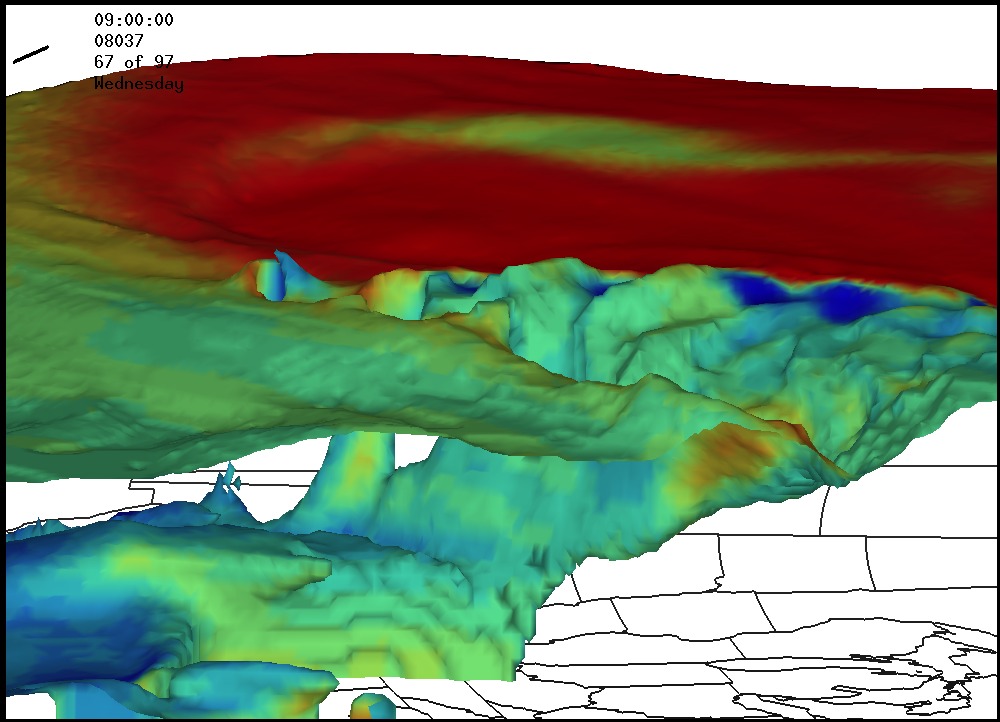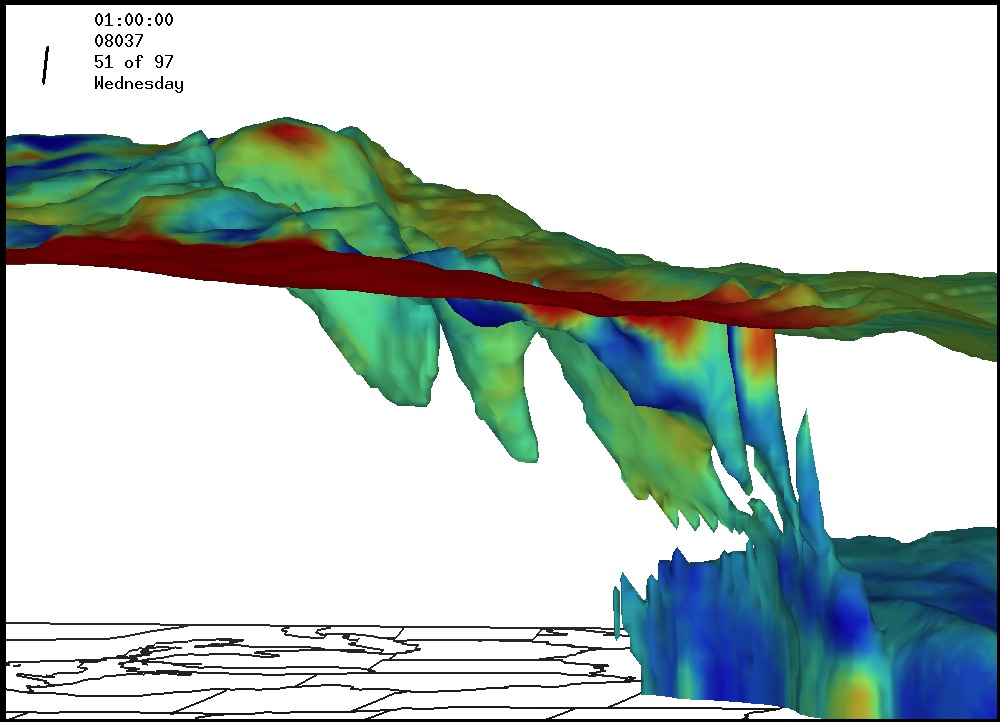Current and Future Inertial Instability Research
Recently we have shown that inertial instability plays a significant role in stratosphere-troposphere exchange in the midlatitudes. We are also finding this same mechanism in regions of eastern Russia and northern Australia associated with cyclones in those areas.
Currently we are reasearching the importance of the ageostrophic wind in diagnosing regions of inertial instability (more info)
Work is currently under way which shows a teleconnection mechanism between inertial instability and the subpolar and the subtropical jets (more info). Please open link with VLC media player.
Stratospheric and tropspheric gravity waves are directly related to inertial instability, most specifically related to EPV dipoles in the UTLS.
These gravity waves are evident in tropical Cyclone Talas (2011) as are EPV dipoles which extend 300 km horizontally and
have vertical depths of 3 km. Here are animations that show gravity wave propogation above tropical cyclone Talas:
Note: Vertical motion is shaded and contoured, MSLP is contoured and latitude is contoured for all animations in this list
- 4.4 km gravity wave propogation
- 10.2 km gravity wave propogation
- 15 km gravity wave propogation
- 18 km gravity wave propogation
- 20 km gravity wave propogation
- 24 km gravity wave propogation
Future work will include a climatology which investigates what percentage of the time inertial instability is present in the UTLS in midlatitude mid-winter and early spring storms. Additonal research will also include what percentage of the time is snowfall in the midlatitudes assocaited with inertial instability. We also plan to include inertial instability driven warm conveyor belt (WCB) analysis.
The figure to the right (first slide) shows an inertially unstable WCB. The 323 K theta-e isosurface (shaded by EPV, red is postive and blue is negative) extends from the UTLS to the surface. Finger-like appendgaes extend from the surface to the UTLS via convective updrafts.

